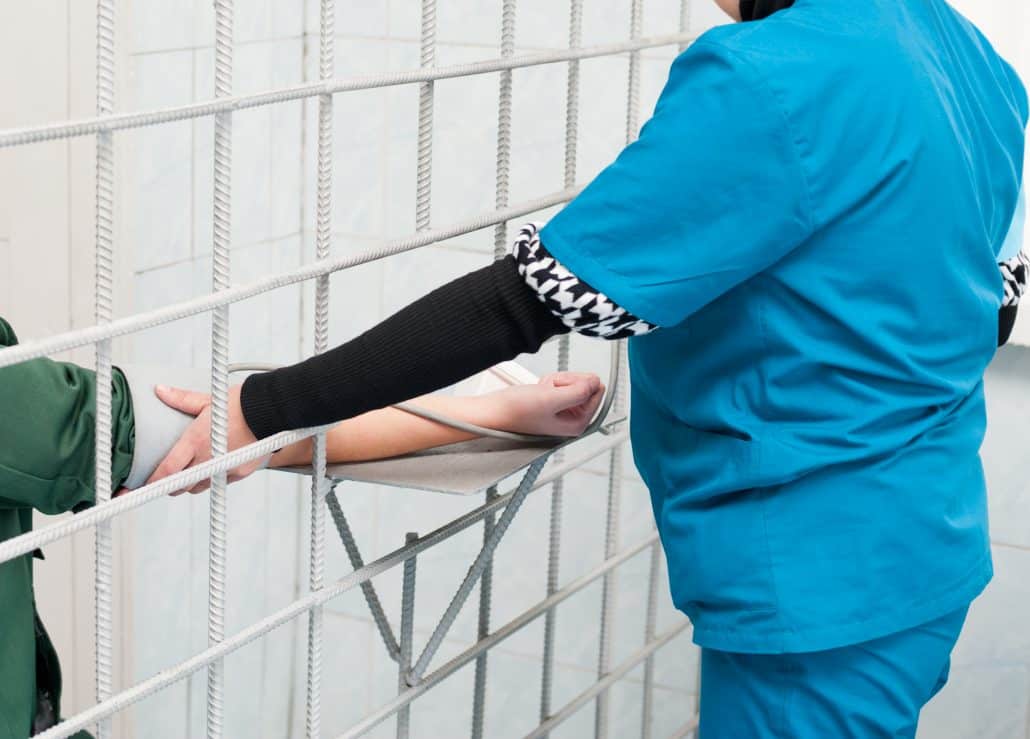Telemedicine is growing in popularity across numerous industries. One of the most beneficial uses of this technology occurs within the United States prison system. This innovative tech is changing the way we engage with healthcare, particularly in the areas of mental health. Prison operators recognize the enormous benefits of Telemedicine. Here, we examine how state prisons use Telemedicine to improve care and reduce costs.
Improved Behavioral Healthcare
The mental health of inmates is a primary concern to prison operators. The Atlantic reports that 55% of male inmates and 78% of female inmates within the US state prison systems are mentally ill. Some people believe treatment for these issues would have reduced the chance of many individuals becoming incarcerated in the first place. Properly treating mental disorders could then, lead to lower recidivism rates, and it certainly creates a safer environment for guards and inmates. Telemedicine is more effective and efficient than traditional treatment. It allows mental health professionals to see back-to-back patients in a variety of locations. Additionally, if an inmate needs immediate assistance, he or she has quick access to treatment as there is no need for a professional to travel to the prison /or transport the inmate to the doctor. This is extremely useful when an inmate becomes agitated or experiences a serious mental “breakdown.” It is also important to note that many behavioral healthcare professionals are simply uncomfortable entering a prison, and therefore, do not provide services to prison inmates. With Telemedicine, professionals can treat patients from the comfort of their own home or office. Furthermore, scheduling appointments is a simple process, and doctors can easily follow-up with patients.
Cost Effective
Prison operators often struggle to stay within budget. It is difficult to meet all the needs of inmates without exceeding fund limitations. The Vera Institute of Justice estimates the annual cost of incarcerating, a person in the US averages $30, 000-$60,000. Telemedicine helps reduce the cost of behavioral health. Paying a psychiatrist to travel long distances is quite expensive. Alternatively, transporting prisoners to healthcare professionals raises safety concerns, as well as increasing costs. With the large percentage of inmates needing psychiatric care, the compounded cost saving of using Telemedicine is enormous.
Increased Safety
Safety and security are additional concerns for prison operators. As we briefly mentioned in the sections above, Telemedicine helps create a safer environment for everyone. By properly treating mental illness, inmates are less likely to become violent or create problems for guards and other prisoners. Let’s imagine a common scenario where an inmate needs a change in medication. He is upset and acting out. It might take a week or longer for him to see a psychiatrist with the traditional methods of care. During this waiting period, things could go terribly wrong as he grows increasingly agitated. However, with Telemedicine, he can see a doctor within hours, rather than weeks. His medication is quickly switched, and the situation is diffused immediately. Additionally, security risks are lowered by eliminating the need for transportation to and from psychiatric facilities. The importance of these benefits cannot be understated. The improved safety implications are far-reaching within the prison system.
Telemedicine is increasingly gaining traction as state laws change to meet the needs of various medical use cases. The ability to access behavioral health professionals quickly and easily is shifting mental healthcare as we know it. Not only are states becoming more inclusive, one of SecureVideo’s main priorities is an easy and pleasant user experience for all with a 24/7 support team to back it up.
Contact us for more information.
